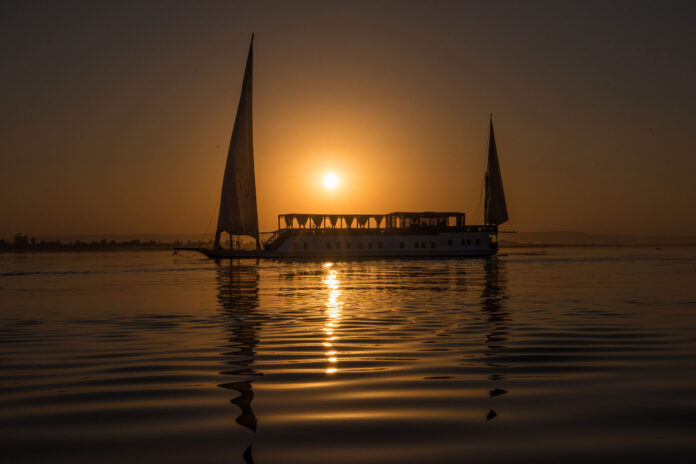You cannot visit Egypt without seeing its ancient capital “Thebes”, nowadays known as “Luxor”. If you desire to boost your experience, It will be a great choice to explore upper Egypt through a Nile cruise. We recommend Sonesta star Goddess.
Through the Nile cruise, you will be able to enjoy the picturesque nature of Upper Egypt among the Nile, sun, and Greenery. Moreover, you can see Egypt’s most important monuments in Luxor and Aswan.
The temple of Karnak
This temple is the most prominent stop in the itinerary of the Nile cruise. It lies on the east bank of Luxor and is considered the largest temple in Egypt. In fact, it is a complex of ancient religious buildings dating back to the period from the middle kingdom until the Greco-roman era.
Actually, the most impressive building in the complex of Karnak is the large temple of Amun-re. The temple of Amun-re incorporates 10 pylons, the first one is the largest in Egypt, besides, it has the biggest ancient hall in the world which contains 134 giant columns, the central columns are 25 m long while the rest are 18 m. Also, there are many shrines consecrated for different gods like Ptah, Osiris and Montu.
The temple of Luxor
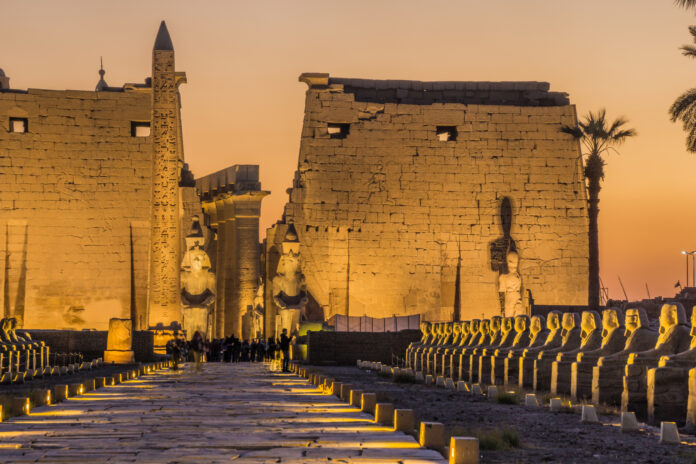
It is a large temple built by the end of the 18th dynasty under the reign of Amenhotep III, but many other kings added various buildings to it. The temple lies on the eastern bank of the Nile in Luxor, it was once connected by the temple of Karnak by a wide avenue flanked by statues of sphinxes, parts of it still exist.
The pylon of the temple was once preceded by two obelisks, but only one still exists, while the other stands now at the Palace of the Concorde in Paris. There are also six large statues of Ramses II in different poses. The pylon leads to the 1st courtyard built by Ramses II, then a colonnade of Amenhotep III, and another courtyard of Amenhotep III. Then you reach the hypostyle hall, and finally the sanctuary of the temple.
The walls of the temple bear significant scenes and inscriptions, like those of the battle of Kadesh, the ancient Opet festival, and the divine birth of Amenhotep III.
The temple of Queen Hatshepsut at Deir-el-Bahari
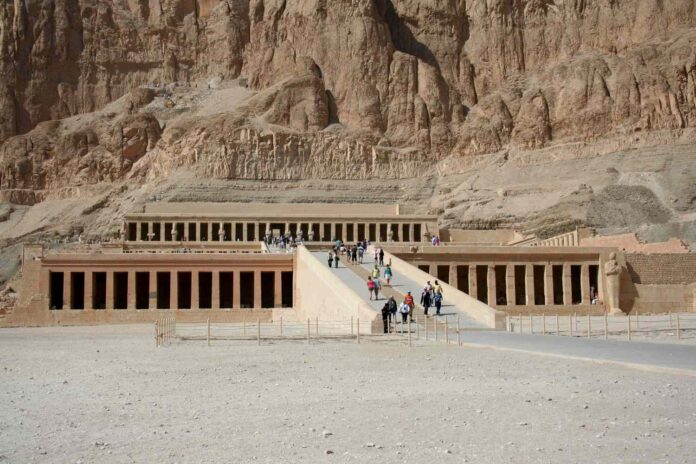
Another famous monument at the western bank of Luxor is the temple of Deir el-Bahari. It is the mortuary temple of the most powerful female ruler in Ancient Egypt, queen “Hatshepsut”. She was the daughter of King Thutmose I and the wife of Thutmose II, after her husband’s death, his son from another consort was supposed to be the king of Egypt. Due to his young age, Hatshepsut was able to usurp the throne of Egypt, but she needed to legitimize her rule, so she proclaimed that god Amun was her father, not Thutmose I.
For this purpose, she built the temple for god Amun and attached the chapel of the divine birth, on its walls she depicted the story of her divine birth from god Amun. The temple was designed by the well-known architect “Senenmut”. It is built on three levels, each level has an open court with a ramp at the western end that leads to the next level. This ramp is flanked by two colonnades at the facade of each terrace.
Royal tombs in the Valley of the Kings
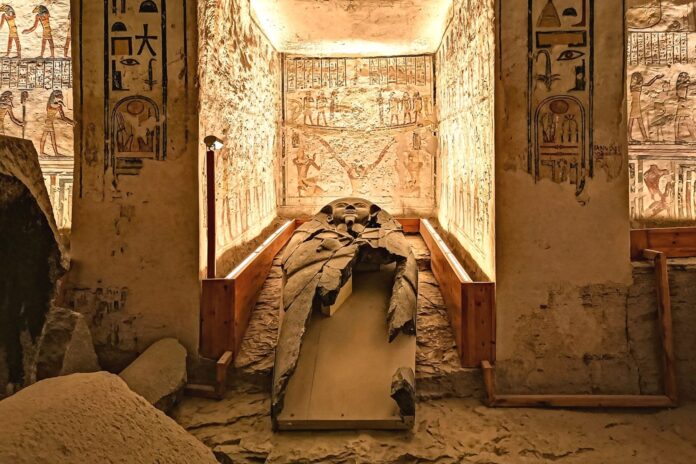
This valley contains 63 ancient royal tombs belonging to kings and queens from the new kingdom. The most famous tomb there belongs to King Tutankhamun, this tomb was full of monuments and treasures when it was discovered by Howard Carter.
Tombs of the Nobles
These tombs belong to nobles and viziers from the new kingdom, and they were found in several cemeteries in the Quran on the west bank of the Nile.
Temple of Esna
After sailing about 50 km from Luxor, the Nile cruiser would stop at Esna, which is known for its ancient temple of the god Khnum. It is a Ptolemaic temple erected on old foundations built during the reign of Thutmose III in the new kingdom. The remaining part of the temple is a large hall that comprises 24 columns with distinctive floral capitals.
Temple of Edfu
When the Nile cruise arrives at Aswan, it will be time for the tour of the astonishing temple of Edfu. This temple is the last huge one built in Ancient Egypt as it dates back to the Ptolemaic period. Luckily, this temple is in a great state of preservation, since it has been covered in sand for centuries. The temple of Edfu was consecrated to the ancient Egyptian god “Horus”, who was represented as a falcon, or a falcon-headed god.
Temple of Kom Ombo
The city of Kom Ombo lies about 45 km to the north of Aswan. It has a unique temple, as it is the only temple in Egypt to be divided into 2 parts consecrated to different gods. The first part was dedicated to the god Horus, and the other one was dedicated to the god Sobek.
The unfinished obelisk
Have you ever asked how ancient Egyptians build their huge obelisks? Actually, the archaeologists came to the answer here at the site of the unfinished obelisk in Aswan. It is an obelisk that was under construction, but cracks prevent workers from finishing the work. On the positive side, this obelisk provides us with information about the stages of erecting huge obelisks in Ancient Egypt.
The temples of Abu Simbel
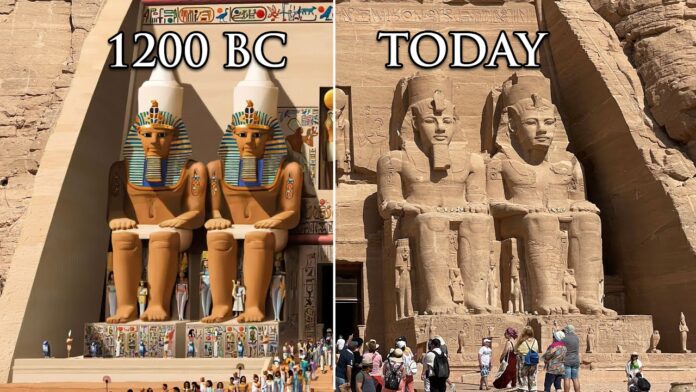
If you book a long Nile cruise, the itinerary of the journey may comprise the visit to the temples Abu Simbel. The great temple of Abu Simbel is located about 280 km south of Aswan, and it is the largest rock-cut temple in Egypt. It was built by Ramsses II, the powerful pharaoh of the 18th dynasty. The facade of the temple of Abu Simbel has 4 giant statues of Ramses II. It is worth mentioning that a huge number of visitors come to the temple to see the phenomenon of sun alignment, which occurs twice every year. In which the sun penetrates the temple and reaches the inner sanctuary to lighten the four statues of gods and Ramses II.
Furthermore, the remarkable fact about the great temple of Abu Simbel is that it was completely dismantled and has been rebuilt again in another location in order to rescue it from the flood of the Nile. Besides this temple, there is another smaller one for “Nefertari ” the wife of Ramses II.
